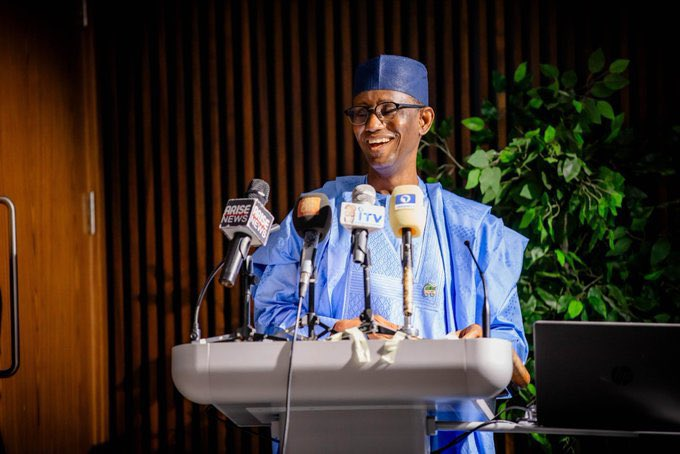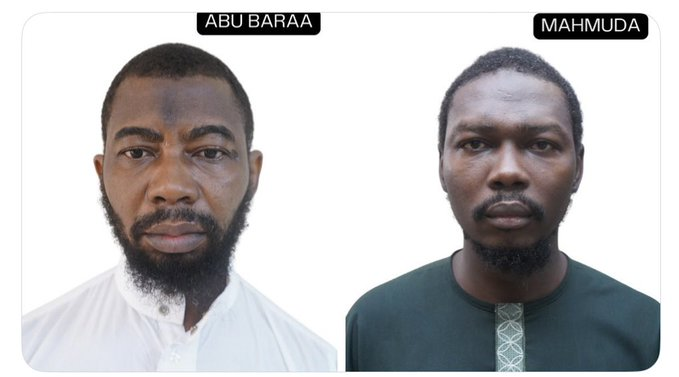Nigeria’s National Security Adviser (NSA), Mallam Nuhu Ribadu announced a major breakthrough in the federal government’s war against terrorism, confirming the capture of two top leaders of Jama’atu Ansarul Muslimina fi-Biladis Sudan, widely known as Ansaru, Nigeria’s Al-Qaeda affiliate. He described the intelligence-led operation as one of the most significant counter-terrorism feats in the country’s history.

Speaking at a press conference at the headquarters of the National Counter Terrorism Centre, Office of the National Security Adviser (NCTC-ONSA), Ribadu identified the suspects as Mahmud Muhammad Usman, also called Abu Bara’a, Abbas or Mukhtar, who served as the self-styled Emir of Ansaru, and his deputy, Mahmud al-Nigeri, also known as Mallam Mamuda. Both men had been on Nigeria’s most-wanted list for years and were also internationally wanted for their roles in major terrorist activities.
Ribadu explained that the precision operation was the culmination of months of surveillance, human intelligence, and technical tracking that showcased the growing sophistication and synergy among Nigeria’s security agencies. He said the arrest of Abu Bara’a and Mamuda marked “the beginning of the end of impunity” for terrorist leaders who have long evaded justice.
The captured suspects, according to the NSA, were directly responsible for a string of high-profile attacks, including the 2022 Kuje prison break, the attack on Niger’s uranium facility, the 2013 abduction of French engineer Francis Collomp, and the 2019 kidnapping of Alhaji Musa Umar Uba, the Magajin Garin Daura. They were also implicated in the abduction of the Emir of Wawa and maintained operational links with jihadist groups across Mali, Niger, and Burkina Faso.
Ribadu described Abu Bara’a as the architect of several terrorist attacks in recent years, while Mamuda, his deputy, was identified as the head of the “Mahmudawa” cell that operated around Kainji National Park in Niger and Kwara States and extended into Benin Republic. Mamuda, he added, received training in Libya between 2013 and 2015 under foreign jihadist instructors from Egypt, Tunisia, and Algeria, specializing in weapons handling and improvised explosive device (IED) fabrication. Together, the two men spearheaded multiple attacks on civilians, security forces, and critical infrastructure across Nigeria.
Providing context, Ribadu traced the history of Ansaru to January 2012, when it emerged as a splinter group from Boko Haram. Initially branding itself as a “humane alternative,” the group soon shifted focus to targeting security operatives, civilian communities, and government infrastructure. Its adoption of Al-Qaeda in the Islamic Maghreb’s (AQIM) setting sun logo signaled its alignment with global jihadist movements. Over time, Ansaru entrenched itself through sleeper cells in urban areas and bases in forests, particularly around Kainji National Park.

Ribadu confirmed that valuable materials and digital evidence were recovered during the operation and are currently undergoing forensic analysis. He expressed confidence that the intelligence gathered would bolster ongoing efforts to dismantle the group’s remnants and disrupt their foreign collaborators.
The NSA attributed the success to Nigeria’s improved counter-terrorism coordination and urged citizens to remain vigilant and provide timely intelligence to authorities. He stressed that the government would continue to pursue extremists with precision, resolve, and determination.
Minister of Information and National Orientation, Mohammed Idris, hailed the operation as a landmark achievement. He assured Nigerians of President Bola Tinubu’s commitment to restoring security nationwide, while also calling for public cooperation in the fight against terrorism. Idris urged the media to avoid glorifying extremist groups, reminding them that victims of terrorist violence are fellow citizens—fathers, mothers, brothers, and sisters—whose suffering must not be overshadowed by criminal propaganda.









